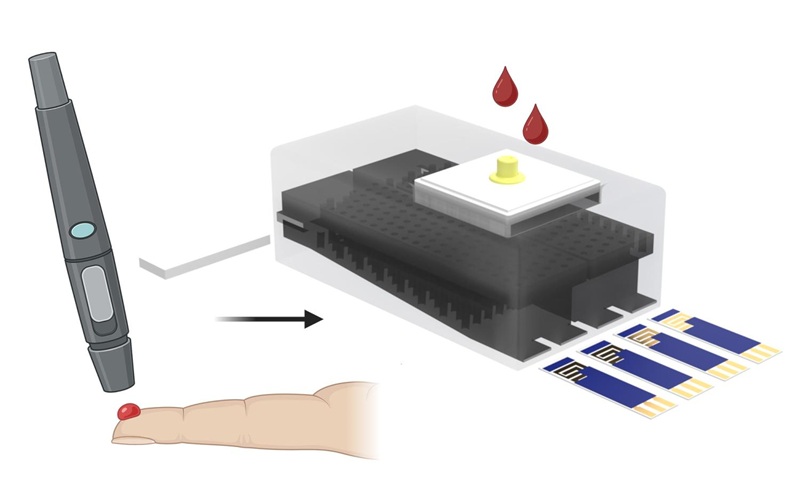Two Immunoassays Compared for Determination of Serum Vitamin D
By LabMedica International staff writers
Posted on 06 Jul 2021
Vitamin D is a fat-soluble steroid prohormone that is generated mainly in the skin by photochemical conversion of 7-dehydrocholesterol. 25-hydroxyvitamin D (25(OH)D) is its main storage form and is present in blood at very high concentration with respect to the active form 1,25-dihydroxyvitamin D.Posted on 06 Jul 2021
The difficulties in the determination of 25(OH)D are related to its fat soluble nature, as well as its strong binding to the vitamin D binding protein (VDBP) and to serum albumin. On the other hand, although it would be appropriate for the different immunoassays to detect vitamin D2 and D3 in equimolar form, this is not usually fulfilled.

Image: The IDS-iSYS Multi-Discipline Automated System Analyzer (Photo courtesy of Immunodiagnostic Systems)
Clinical Biochemists at the Hospital Universitario Miguel Servet (Zaragoza, Spain) carried out a transversal descriptive observational study on a total of 184 individuals. The median age of the total of patients was 61 years old, with a minimum of 1 year and a maximum of 92. There were 31.5% men and 68.5% women. The samples came from both healthy patients and patients with various pathologies as bone, kidney, thyroid, cardiovascular, immune, neurological diseases and cancer.
The concentration of 25(OH)D was measured, as routine health analysis, by the automated IDS-iSYS 25VitD assay in an IDS-iSYS Multi-Discipline Automated System Analyzer (Vitro, Immunodiagnostic Systems Holdings PLC, Boldon Colliery, UK), which uses a chemiluminescence technology, which is fully automated. The same samples were processed by the Alinity i 25-OH Vitamin D assay in an Alinity i automated Analyzer (Abbott, Abbott Park, IL, USA), which is a one-step delayed-action immunoassay using chemiluminescent microparticles immunoassay (CMIA) technology.
The scientists reported that of the total patients, 52.7% received vitamin D supplements. The correlation coefficient of agreement for general group, supplementation group and group without supplementation was 0.92, 0.91 and 0.89, respectively. In all of them, a kappa index>0.75 was obtained. The mean value of the bias was higher for the supplemented group (−20.4 nmol/L) than for the group without treatment (−4.9 nmol/L). Graphically, a greater concordance between both assays was observed when patients receiving vitamin D supplements were excluded. The team observed lower concentrations of 25(OH)D in the IDS-iSYS 25 VitD assay when compared to the results obtained with the Alinity i 25-OH Vitamin D assay.
The authors concluded that the assays evaluated were not comparable to each other. Despite this, they show an excellent concordance in the evaluation of the vitamin D status. The study was published on June 23, 2021 in the journal Practical Laboratory Medicine.
Related Links:
Hospital Universitario Miguel Servet
Immunodiagnostic Systems Holdings PLC
Abbott














